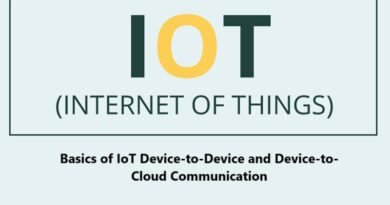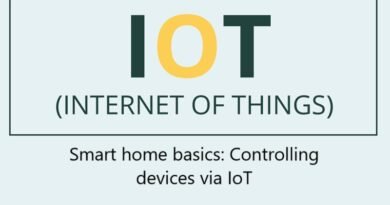Understanding the CIA Triad: Confidentiality, Integrity and Availability Explained
The CIA Triad—Confidentiality, Integrity, and Availability—is the foundational model of information security. It represents the three critical principles required to protect sensitive data and ensure secure, reliable systems. Each pillar addresses a unique aspect of safeguarding information, collectively forming a comprehensive framework for mitigating risks and combating cyber threats. By understanding and implementing the CIA Triad, organizations can build robust security measures that protect against data breaches, system downtime, and malicious attacks.
In this article, we’ll explore the CIA Triad’s components, their significance in information security, and how they interconnect to provide a balanced approach to protecting digital assets.
Overview of the CIA Triad
The CIA Triad is a conceptual framework designed to guide the implementation of security measures. Its primary goal is to ensure that information systems remain secure by:
- Confidentiality: Preventing unauthorized access to sensitive information.
- Integrity: Maintaining the accuracy and reliability of data.
- Availability: Guaranteeing timely access to data and systems when needed.
By addressing these three areas, organizations can reduce vulnerabilities, maintain operational continuity, and comply with regulatory standards.
Context of Its Application
The CIA Triad applies across various domains and industries, including:
- Organizations: Ensuring compliance with data protection laws and safeguarding corporate secrets.
- Systems: Protecting operating systems, applications, and software from cyber threats.
- Networks: Securing communication channels and preventing unauthorized data interception.
- Data: Safeguarding both structured and unstructured data against breaches and corruption.
Whether managing enterprise networks or personal devices, the CIA Triad serves as a universal blueprint for designing effective security strategies.
Confidentiality
Confidentiality ensures that sensitive information remains accessible only to authorized individuals. It prevents unauthorized entities from viewing or exploiting private data, preserving privacy and compliance with legal standards.
Key Principles
- Data Encryption: Transforming data into unreadable formats that can only be accessed with decryption keys.
- Access Controls: Implementing robust authentication (e.g., passwords, biometrics) and authorization mechanisms to limit access.
- Confidentiality Agreements: Using non-disclosure agreements (NDAs) and policies to enforce confidentiality obligations.
Examples
- Securing personal data, such as social security numbers and financial records.
- Restricting access to confidential company documents, like trade secrets or client information.
Challenges
- Insider Threats: Employees or contractors with access misusing or leaking data.
- Phishing Attacks: Social engineering tactics that deceive individuals into revealing sensitive information.
- Data Breaches: Unauthorized intrusions into systems, exposing sensitive information.
Integrity
Integrity ensures that data remains accurate, consistent, and trustworthy throughout its lifecycle. It prevents unauthorized modifications and guarantees that data reflects its intended state.
Key Principles
- Data Validation and Verification: Checking inputs and outputs for accuracy and compliance with expected formats.
- Hashing: Generating unique hashes to verify data consistency and detect tampering.
- Digital Signatures: Using cryptographic methods to authenticate data sources and ensure unaltered transmission.
Examples
- Preventing data corruption during file transfers or backups.
- Ensuring the authenticity of financial transactions or electronic records.
Challenges
- Tampering: Deliberate modification of data by malicious actors.
- Malware Attacks: Infections that alter or damage critical files.
- Accidental Modification: Human errors leading to unintended data changes.
Availability
Availability ensures that authorized users have timely and reliable access to information and systems. It emphasizes system uptime and resilience to disruptions.
Key Principles
- System Redundancy and Failover Mechanisms: Ensuring backup systems can take over in case of failures.
- Regular System Maintenance and Updates: Applying patches and addressing vulnerabilities to prevent outages.
- Protection Against Denial of Service (DoS) Attacks: Implementing measures to mitigate traffic overloads and maintain service availability.
Examples
- Providing 24/7 access to online services, such as banking or e-commerce platforms.
- Implementing disaster recovery plans to ensure business continuity during crises.
Challenges
- System Downtime: Hardware failures or software crashes disrupting access.
- Power Failures: Outages leading to loss of service or data unavailability.
- Cyberattacks: Targeted efforts to disable systems, such as Distributed Denial of Service (DDoS) attacks.
Interdependence of CIA Triad
The three principles of the CIA Triad are deeply interconnected, and a failure in one pillar often affects the others. For example:
- Ensuring Confidentiality without considering Integrity might lead to secure but unreliable data.
- Overemphasis on Integrity can restrict system Availability, potentially hindering productivity.
- Enhancing Availability without proper Confidentiality measures could expose sensitive data to unauthorized access.
Examples of Conflicts
- Overemphasis on Confidentiality: Encrypting data excessively might slow down system performance, impacting Availability.
- Prioritizing Availability: Keeping systems always online without robust Integrity checks could lead to unauthorized changes.
Strategies to Maintain a Balanced Approach
- Conduct regular risk assessments to identify potential trade-offs.
- Use multi-layered security solutions that address all three aspects simultaneously.
- Implement policies that define how to handle conflicting priorities.
Practical Applications
- Financial Systems: Protecting banking platforms with encryption, transaction validation, and disaster recovery plans.
- Healthcare Data: Ensuring patient confidentiality, maintaining accurate medical records, and guaranteeing system uptime for emergency access.
- Government Records: Securing classified data, validating sensitive documents, and ensuring continuity of operations during crises.
Tools and Technologies Supporting CIA Principles
- Firewalls and Intrusion Detection Systems (IDS/IPS): To enhance Confidentiality and Integrity.
- Backup Systems and Cloud Solutions: To improve Availability.
- Encryption Tools and Digital Certificates: To ensure data Confidentiality and Integrity.
Emerging Threats and Challenges
- Ransomware: Encrypts data, affecting Availability and Integrity.
- Advanced Persistent Threats (APTs): Long-term attacks targeting Confidentiality and Integrity.
- Supply Chain Attacks: Compromising third-party systems to infiltrate organizations.
Role of Evolving Technologies
- Artificial Intelligence (AI): AI-powered threat detection systems can identify vulnerabilities across all three pillars.
- Blockchain: Offers immutable records to enhance Integrity while maintaining Availability.
- Zero Trust Models: Strengthen Confidentiality by requiring verification for every access attempt.
Conclusion
In conclusion, The CIA Triad remains the cornerstone of information security, guiding organizations in protecting sensitive data and systems. By addressing Confidentiality, Integrity, and Availability, businesses can build resilient security frameworks that withstand evolving threats. Balancing these principles is crucial for maintaining operational continuity and trust in digital environments. As technology and threats evolve, so too must our strategies, ensuring that the CIA Triad continues to serve as a robust foundation for cybersecurity.








